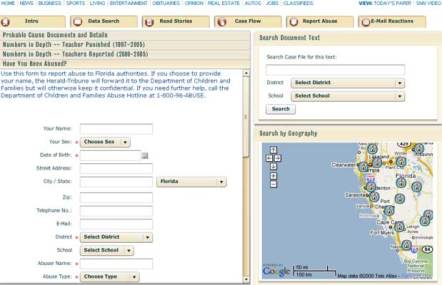Warning: Cher Phillips and I spent a good 10 hours straight struggling with the semantics of Windows Movie Maker yesterday, so I’m willing this post to be legible, as we didn’t stop staring at the computer screen until 11:16 p.m.
Ten hours? Yeah, even we couldn’t believe it. The kicker of it all was, it wasn’t anything we did wrong. Seriously. The film was captured, created, cut and laid in all as it should be. The editing and the narration and the fine-tuning went fine. But as we were wrapping up yesterday, what we thought was screen resolution or settings turned out to be what we kept calling a “lavendar-crap” mess. All of our film took on, about half way through editing, a blue-ish, purple-ish crappy-ish tinge. Why? We didn’t know, and it turned out that it definitely wasn’t screen settings. It exported with the nasty tinge, too.
Five hours later, we still didn’t know. What we’re guessing now? Codecs, the little jerks. Apparently, the computer didn’t have enough of them. The weird thing was, that only happened halfway through the editing process. Apparently, the codecs had reached their limit after a few hours of gospel music editing.
Eventually, we had to move to a different computer, where we could update the codecs without administrative approval (thank you University of Florida.) We did, and the film no longer looked like plum puke.
But even that didn’t work out totally well. It took us, I don’t know, another two hours to accumulate all the renditions and clips and cuts we’d made before, put them in the same, new folder, and search for each clip we made and replace the big red Xs in our edited timeline. But we did it!
After that whole heartache, though, I’ve decided I need more problem-solving skills when it comes to video story-telling and editing. Or skills that don’t take me 10 hours to excavate with a “Heck, we’ve got nothing left to lose. Let’s just try this and see if it works.” And that would probably mean I’d need a full-year class in this, so I had more time to play and experiment with the camera and the software. I feel the more access I had to those, the more seemlessly editing would have gone, because I’d be more familiar and more proficient with it. I realized this week, when we started editing, that we hadn’t had to do it in over a month. I was rusty, needless to say. (I realize this is my own fault, mostly, but in a perfect world..)
Practice makes perfect, as they say.
And with that, I will say that this class gave me a great love for (and a desire to make) documentaries. To produce an hour-and-a-half film would be great and exciting. However, I’d like more experience covering actual news this way, not necessarily an issue story, but a news story. Not that they couldn’t be both. But at times, I felt I was seeking the documentary story, and not the news story, which is hard for a journalist and a little confusing. I like the challenge of telling a news story in a way, a visual way, that might not be expected, or in the normal reality of a standard news publication.
However, the ability to film and edit it is going to come in handy, however you slice it. It’s another skill I can add to my set, so to speak. And I think, if I can master several other elements of Flash, I’ll truly be able to make some interesting story packages in the end.




